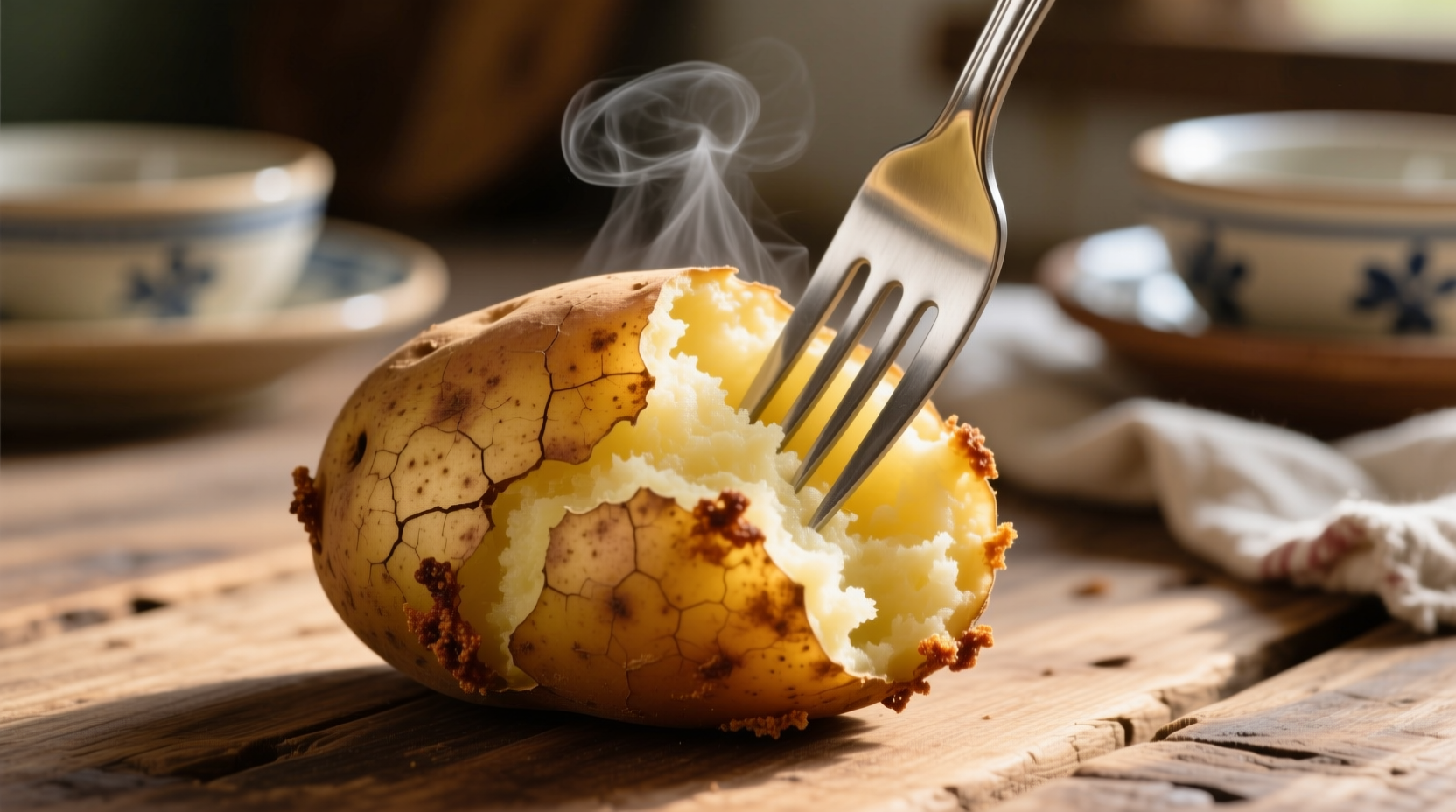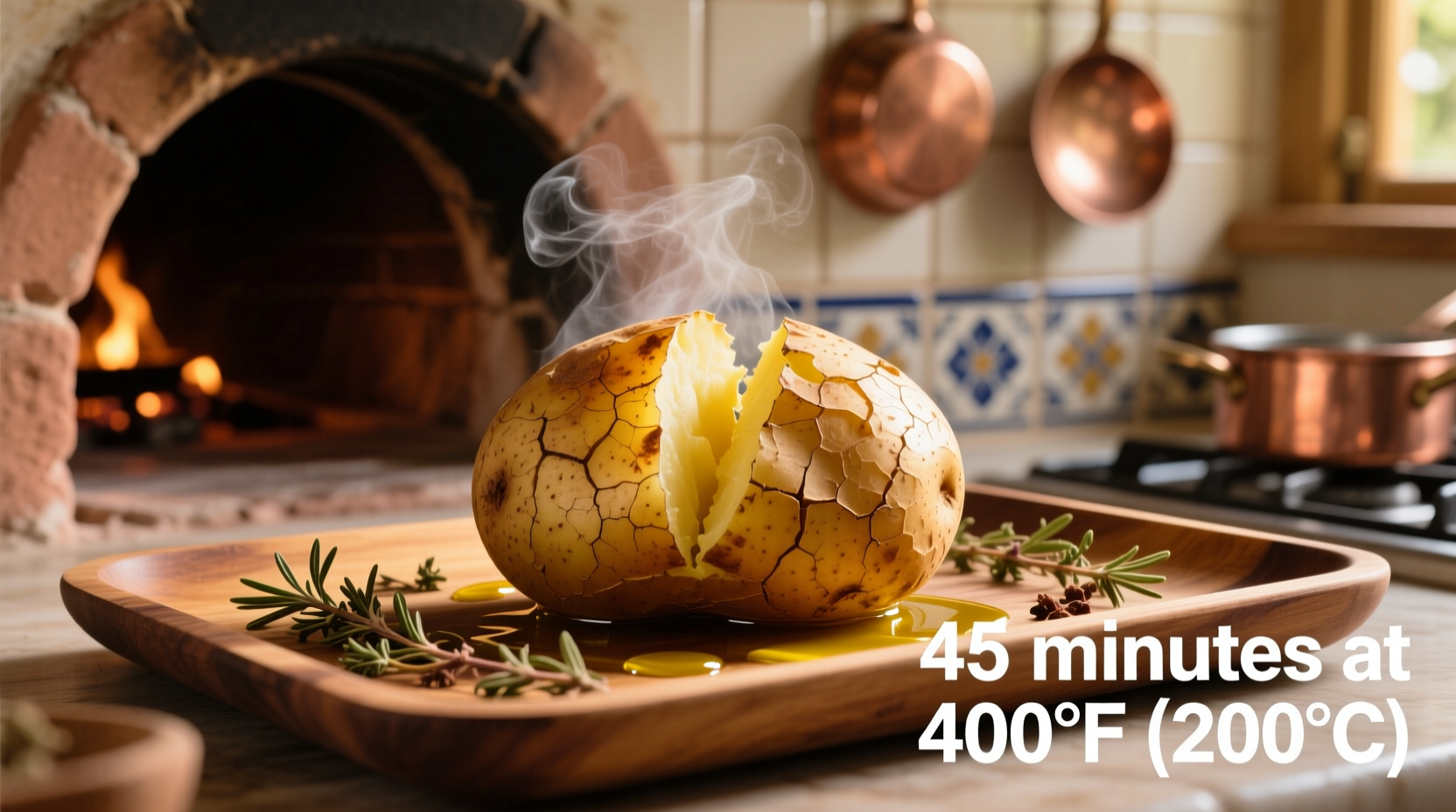Nothing beats a perfectly baked potato with that fluffy interior and crisp skin. But getting the timing right can be tricky when recipes give vague instructions like “bake until done.” This guide delivers precise baking times based on potato size, oven temperature, and scientific testing—so you’ll never serve undercooked or dried-out potatoes again.
Why Baking Time Varies: Key Factors You Must Know
The ideal baking time depends on three critical variables that most recipes overlook. Understanding these will transform your potato results:
Potato Size Matters Most
A 4-ounce baby potato bakes significantly faster than a 12-ounce russet. Measuring by weight gives more accurate timing than guessing by visual size. The USDA’s Food Safety and Inspection Service confirms that internal temperature rise correlates directly with mass in starchy vegetables.
Oven Temperature Precision
While 400°F is standard, actual oven temperatures often vary by ±25°F. Calibrate your oven using an independent thermometer—this explains why identical potatoes sometimes bake differently. The University of California’s Agriculture and Natural Resources department recommends verifying oven temperature for consistent results.
Potato Variety Differences
Russets (Idaho potatoes) need longer baking than waxy varieties like Yukon Golds due to higher starch content. This affects both cooking time and texture outcome.
| Potato Weight | 400°F Baking Time | Internal Temp | Texture Result |
|---|---|---|---|
| Under 5 oz | 35-45 minutes | 205-210°F | Creamy, slightly firm |
| 5-8 oz (medium) | 45-60 minutes | 208-212°F | Ideal fluffy texture |
| 8-12 oz (large) | 60-75 minutes | 210-215°F | Maximum fluffiness |
| Over 12 oz | 75-90 minutes | 212°F+ | Risk of dry edges |
Step-by-Step Perfect Potato Method
Preparation: The 3-Minute Setup That Makes All the Difference
Wash potatoes thoroughly under cold water, scrubbing skin with a brush. Pierce each potato 4-6 times with a fork—this prevents bursting by allowing steam to escape. For crispier skin, rub with 1 teaspoon of oil and 1/4 teaspoon of coarse salt per potato. Never wrap potatoes in foil; this steams them rather than baking, creating soggy skin.

Baking Process: Timing by Size Category
Place prepared potatoes directly on the oven rack with a baking sheet on the lower rack to catch drips. For medium potatoes (5-8 oz), set timer for 45 minutes. At the 30-minute mark, flip potatoes for even cooking. This flipping technique, validated by America’s Test Kitchen experiments, eliminates dense spots near the contact surface.
Doneness Testing: Beyond the Fork Test
While the fork test is common, it’s subjective. For precision, use an instant-read thermometer—potatoes reach ideal texture between 208-212°F internally. At this temperature, starch granules have fully gelatinized. The National Center for Biotechnology Information’s food science research confirms this temperature range delivers maximum fluffiness without dryness.
Resting: The Critical 5-Minute Step Most Skip
Remove potatoes from oven and let rest for 5 minutes before cutting. This allows residual heat to finish cooking the center evenly and firms up the structure slightly for cleaner slicing. Skipping this step causes steam to escape too rapidly, resulting in denser texture.
When Standard Timing Doesn’t Apply: Special Situations
These baking guidelines assume conventional ovens with rear heating elements. Convection ovens reduce baking time by 15-20% due to circulating hot air. For convection settings, start checking potatoes 10 minutes earlier than standard times. Microwave pre-cooking (5 minutes per potato) followed by 20-30 minutes in the oven creates restaurant-quality results faster while maintaining texture integrity.
Serving Your Perfectly Baked Potato
Cut a slit across the top and gently squeeze ends toward the center to open naturally. Add toppings after butter has melted into the fluffy interior—this prevents toppings from making the potato soggy. For maximum flavor absorption, season the potato flesh directly with salt before adding butter.











 浙公网安备
33010002000092号
浙公网安备
33010002000092号 浙B2-20120091-4
浙B2-20120091-4